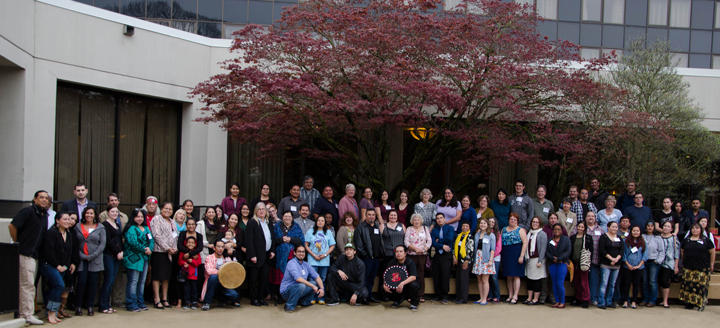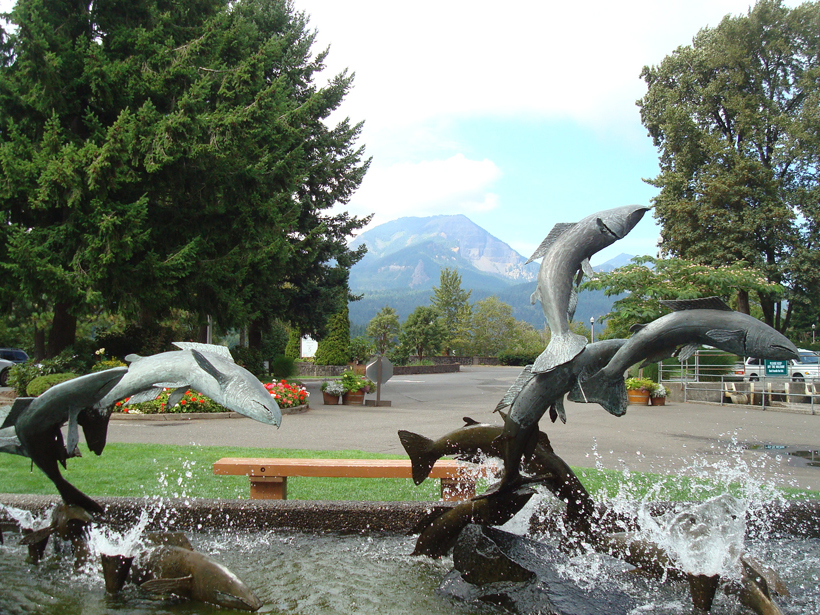Indigenous nations face numerous environmental challenges:
- stresses on native food sources such as fish, wild rice, berries, and other traditional foods
- the effects of floods, droughts, and extreme temperatures on forests and wildlife
- various consequences from the introduction of new invasive species
- human health effects, including the rising incidence of diseases such as diabetes and risks from environmental toxins
To address these issues, the Geoscience Alliance held its third national meeting on the effect of the changing climate on tribal resources and the health of Native Americans. The meeting brought together 116 participants from 48 different indigenous nations and included tribal college students and faculty members. Conference participants spanned a wide age range, from a 6-year-old dancer to a 77-year-old elder, adding to the diversity of perspectives.
In talking sessions, conference participants from tribal lands contributed specific local knowledge relevant to their particular home places.
In talking sessions, conference participants from tribal lands contributed specific local knowledge relevant to their particular home places. Attendees from the Pacific Northwest, for example, contributed information on changes in the salmon population and talked about how tribes are responding. Participants from Montana discussed changes in snowpack, receding glaciers, and consequential droughts in the Rocky Mountains.
Minnesota tribal members spoke of threats to the local moose population and how changing water temperatures and levels have affected fish populations and the abundance of wild rice. From the Southwest, increases in tornadoes, flooding and erosion, and biome shifts causing plants and animals to move were discussed. Water shortages and water contamination were also noted. Similar stories came from Alaska and Hawaii. Regional differences in how tribes have been affected suggest that regional adaptation strategies are required now and in the future.
The conference immersed participants in a communal and culturally focused environment. Discussions of climate change impacts on tribal lands were carried out in talking circles with everyone sharing their knowledge. Traditional dancers from Náakw (Medicine), a Tlingit dance group, not only performed throughout the conference but also participated fully in talking circles and unstructured discussions at mealtimes. A unique aspect of the conference was the knowledge sharing among the cultural experts in the dance group, students, faculty, and others in the science community.
In the conference evaluation, students expressed a sense of empowerment from meeting others who are experiencing issues associated with being Native American and traveling the path of education and science. Non-Native participants gained a better understanding of the issues faced by tribal communities and Native students.

Native Americans are underrepresented in the geosciences despite ongoing efforts to provide pathways into geoscience careers. Native students have a leading role to play in the future management of our nation’s land and water resources, both on the reservation and across the country. With their increased participation, a geoscience research agenda responsive to the unique priorities and values of Native communities can be forged.
The Geoscience Alliance is a national alliance of individuals committed to broadening the participation of Native Americans in the geosciences. Its members are faculty from tribal colleges, universities, and research centers; native elders and community members; industry representatives; students and teachers; and others.
The conference was made possible by support from the National Science Foundation’s Office of Integrative Activities, the Center for Coastal Margin Observation & Prediction, and the National Center for Earth-surface Dynamics. The next Geoscience Alliance meeting is planned for 2017.

—Nievita Bueno Watts, Center for Coastal Margins Observation & Prediction, Oregon Health & Science University, Portland; email: [email protected]; and Diana M. Dalbotten, National Center for Earth-surface Dynamics, University of Minnesota Twin Cities, Minneapolis
Citation: Watts, N. B., (2015), Exploring the impact of a changing climate on tribal communities, Eos, 96, doi:10.1029/2015EO037309. Published on 20 October 2015.
Text © 2015. The authors. CC BY-NC 3.0
Except where otherwise noted, images are subject to copyright. Any reuse without express permission from the copyright owner is prohibited.

